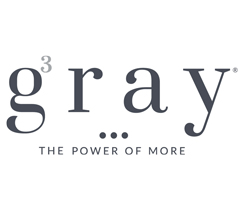API report shows continued decline in total propane sales
U.S. gallon sales of odorized propane declined for the fourth straight year, according to the latest report from the American Petroleum Institute (API).
In the 24th annual report, released in February and titled “2011 Sales of Natural Gas Liquids and Liquefied Refinery Gases,” retail sales fell 3 percent from 2010, to about 8.9 billion gallons. The recent downtrend started after 2007, when sales, measured across residential, commercial, agricultural, internal combustion and industrial sectors of the industry, totaled about 10.3 billion gallons. Propane sales in 2000 had reached 12 billion gallons.
The data reflects a host of well-documented challenges plaguing the propane industry, including warmer-than-average winters, energy competition, customer conservation and advances in energy-efficient appliances.
Among other highlights in the report that tracks regional and national trends, California sold the most odorized propane (576 million gallons) for the fourth straight year in 2011. The state has recorded similar sales figures over the last two years of available data, down only 61,000 gallons from 2010.
The obvious size of California gives it an edge in propane sales, but other factors are also at play, according to Michael Sloan, principal at Virginia-based ICF International.
High electricity prices, inadequate natural gas access in some portions of the state and a significant commercial and industrial base all contribute to gallon sales on the West Coast. California also experienced cooler winters than average in 2010 and 2011, while the rest of the country was generally warmer than average, Sloan notes. California was 5.7 percent colder than the 20-year average in 2010 and 9 percent colder than the 20-year average in 2011 – trends that ICF International calculated based on National Oceanic and Atmospheric Administration data.
North Carolina, Michigan, Illinois and Pennsylvania rounded out the top five states, respectively, for propane sales. The only change among the top five from 2010 occurred at No. 5, where Pennsylvania and Texas switched positions at No. 8. Pennsylvania increased sales nearly 4 percent, to 369 million gallons, while Texas dropped 11 percent, to 351 million gallons.
And though North Carolina, Michigan and Illinois retained the Nos. 2-4 positions, each state lost gallon sales from 2010 – Michigan, in fact, for the fourth straight year and Illinois for the third straight year. Another state streaking downward is New Mexico, which has lost gallon sales for five straight years, from about 147 million gallons in 2006 to 87 million gallons in 2011 – a near 41 percent drop.
States experiencing the largest sales increases from 2010 were Utah, by about 22 percent to 55 million gallons, and Massachusetts, by about 19 percent to 119 million gallons. Alabama and Georgia showed the largest percentage declines, by about 20 percent and 17 percent to 117 million gallons and 212 million gallons, respectively.
When reviewing propane gallon sales by state or industry sector, Sloan cautions against putting too much emphasis on one year’s worth of change but instead prefers weighing the last two to three years. Company participation in the API survey is voluntary, and the level of participation in a state can change from year to year, he says.
While he might not overstate the jump in Massachusetts, Sloan says progress is being made in the Northeast. Gallon sales in New England increased about 8 percent from 2010. Households in the region are converting from expensive fuel oil at rapid rates – and not just to propane. Natural gas and electricity are making inroads there too, he adds.
The declines in Alabama and Georgia are reflective of a larger trend in the South, where electricity has been taking market share from propane, Sloan says.
In a breakdown of propane sales across industry sectors, Michigan sold the most odorized propane, about 351 million gallons, to residential customers, followed by California, Wisconsin, Illinois and North Carolina. The residential sector overall experienced a 7 percent decline from 2010.
California, with about 92 million gallons, led the way in the commercial sector, followed by Pennsylvania, North Carolina, Texas and Florida. Gallon sales in the sector increased about 2 percent from 2010.
Iowa, with about 117 million gallons, was the clear leader in agriculture, followed by Minnesota, North Carolina, California and Illinois. The sector, reflective of the inconsistent pace of weather-influenced corn drying, faced a near 9 percent decline in sales from 2010. In the next several years, Sloan expects the API data to reflect growth in agricultural demand as grain drying demand returns to more normal levels.
The most significant change in gallon sales by sector occurred with industrial applications, which increased by about 143 million gallons, or 28 percent. This increase could be due in part to the economic rebound in the United States, Sloan says. Missouri led the way with about 47 million gallons in sales, followed by California, Florida, Illinois and North Carolina.
Sales in the internal combustion sector increased by about 2 percent from 2010, with North Carolina in front with 75 million gallons, followed by California, Texas, Illinois and Michigan. The growth in autogas could make a difference in this sector in the coming years, Sloan says, but could be offset in the near term by the slowing forklift market.
The report shows a slight increase from 2010 in total sales of natural gas liquids and liquefied refinery gases – 43 billion gallons of propane, butane, ethane and pentanes plus. Propane made up about 42 percent of those sales. The growing supply of natural gas liquids from U.S. shale sources and their lower costs are fueling growth in petrochemical demand, as petrochemical companies convert away from more expensive feedstocks and increase capacity in the United States to take advantage of the lower feedstock costs in this country, Sloan says.
In addition to API, the Gas Processors Association, the National Propane Gas Association and the Propane Education & Research Council sponsor the annual report.
Photo courtesy of the Propane Education & Research Council
















